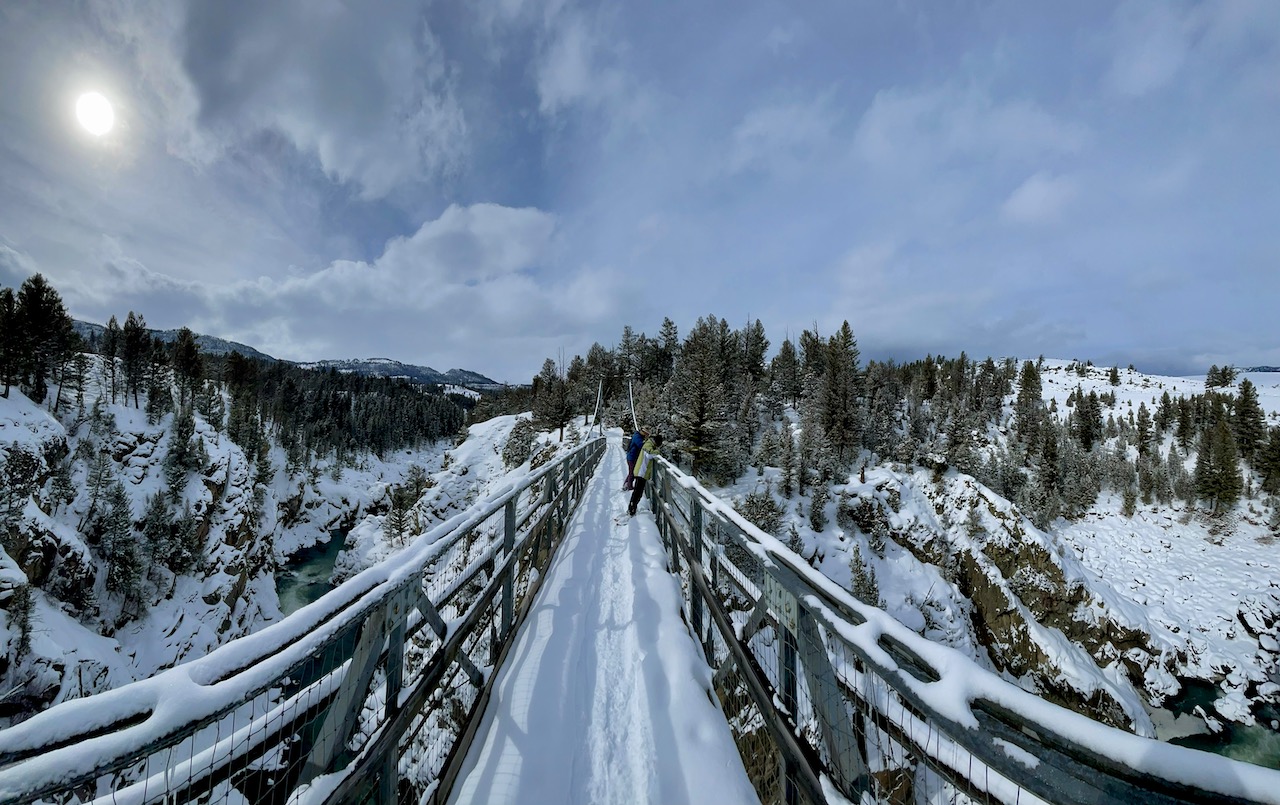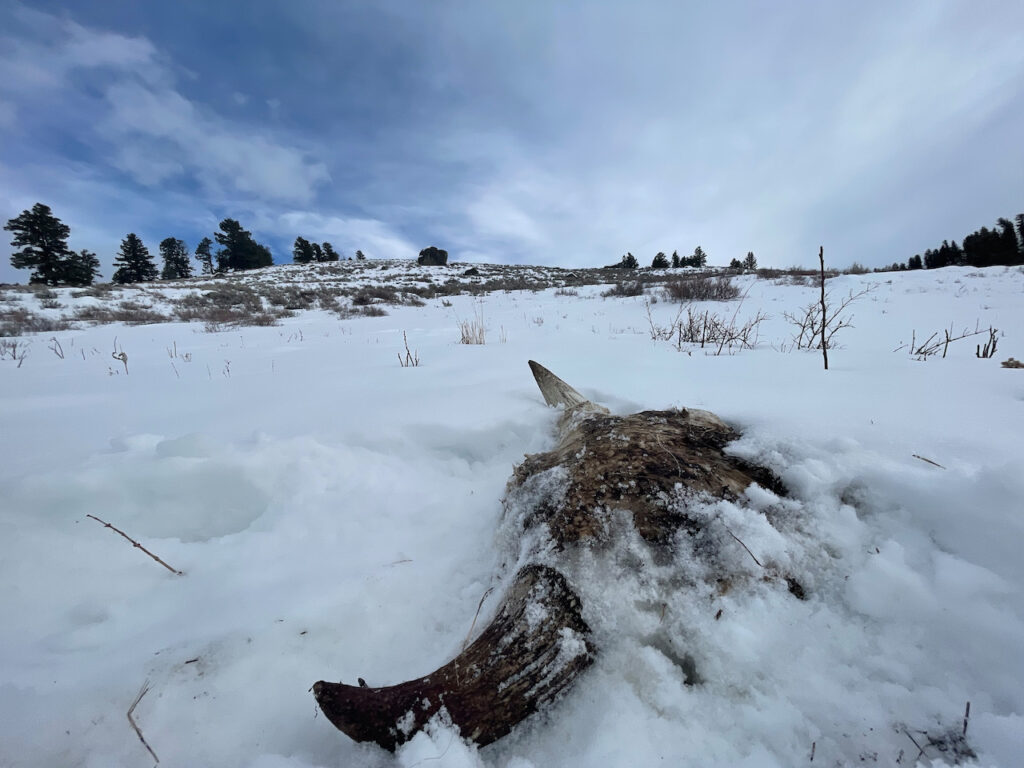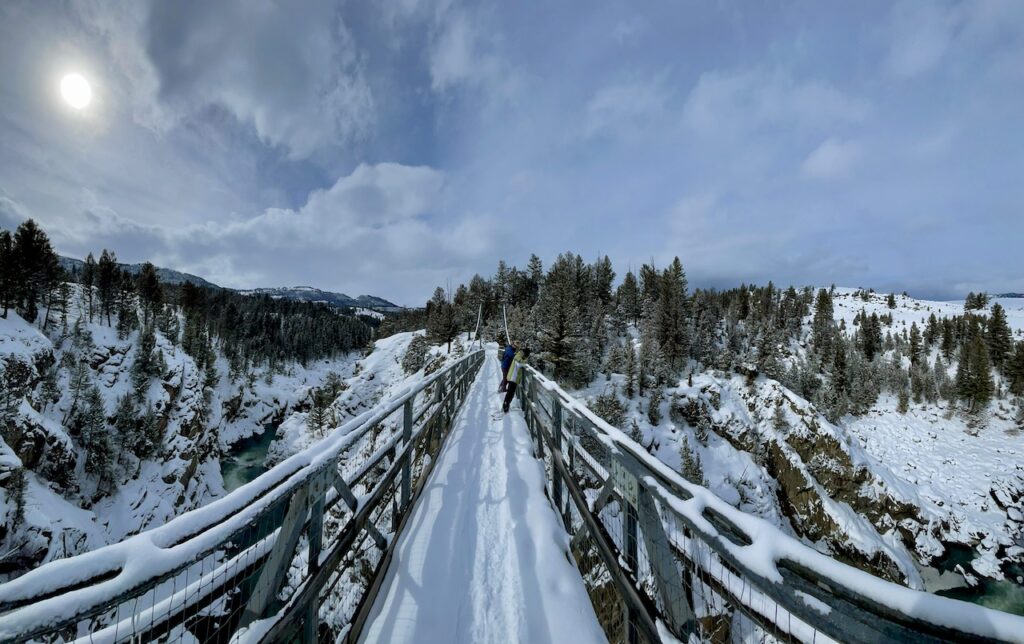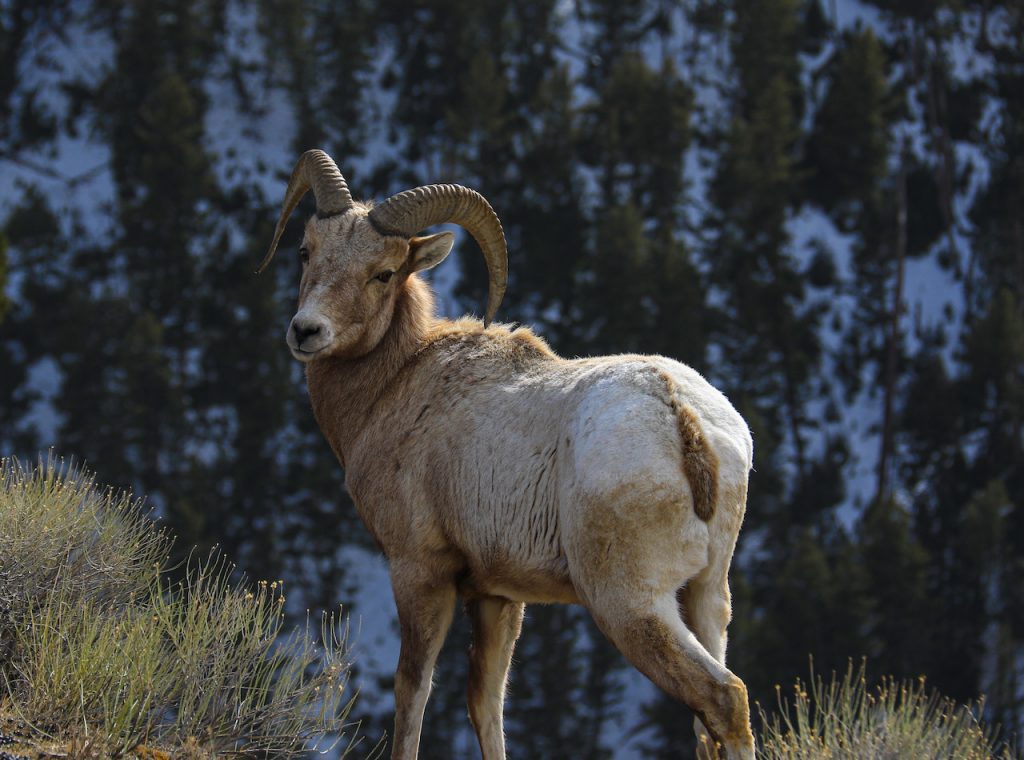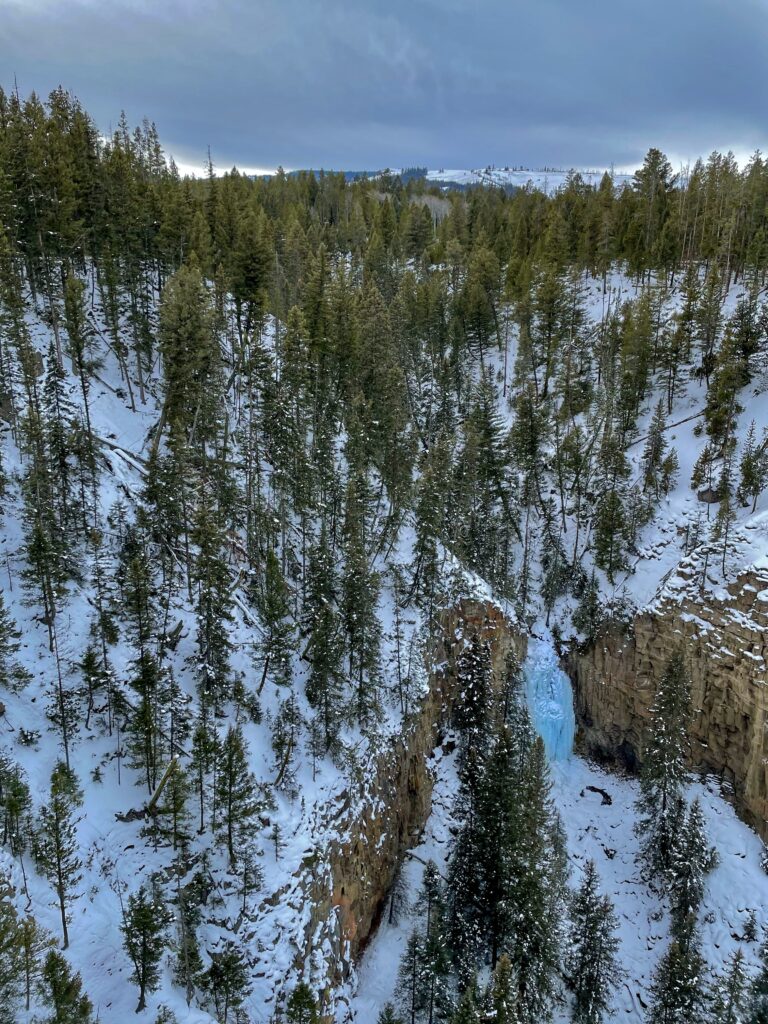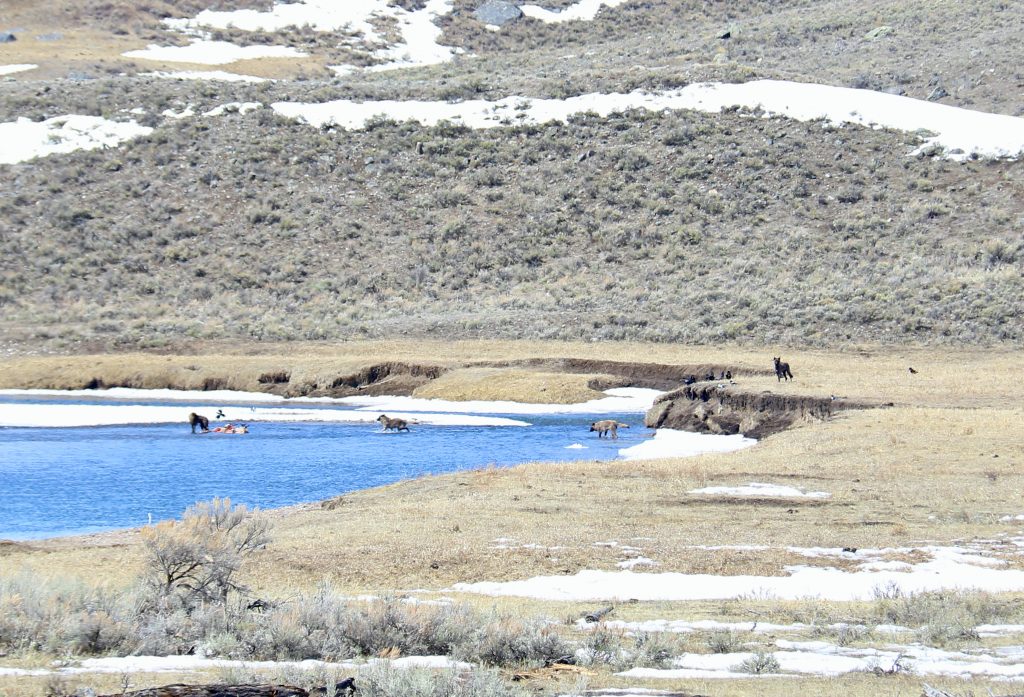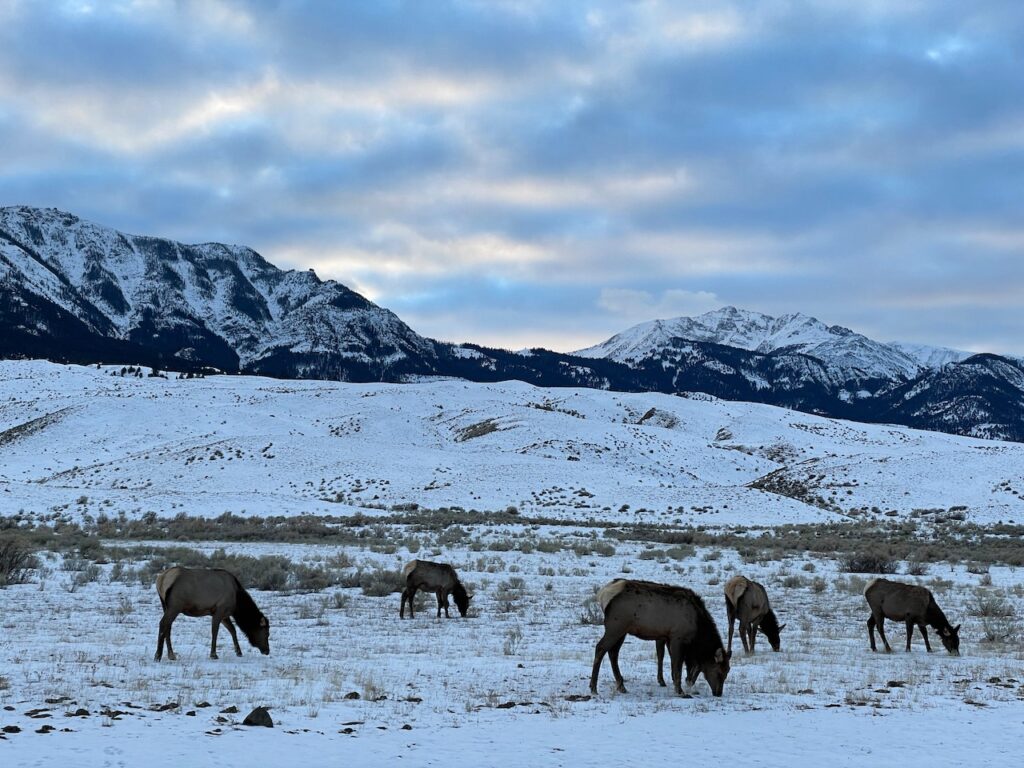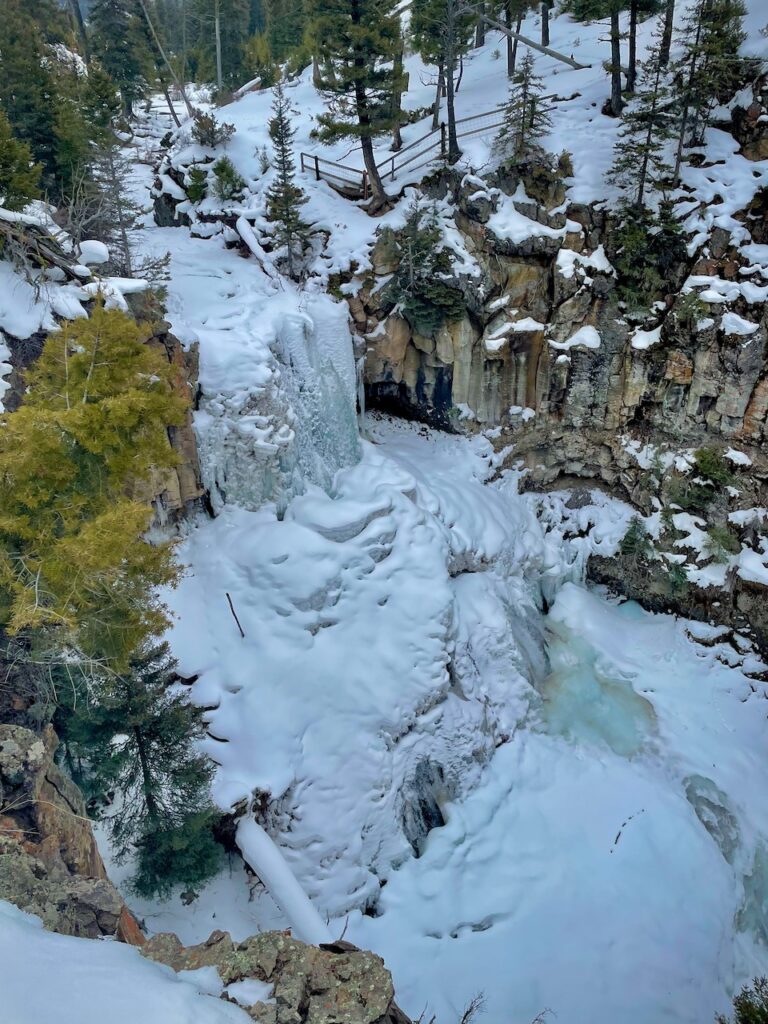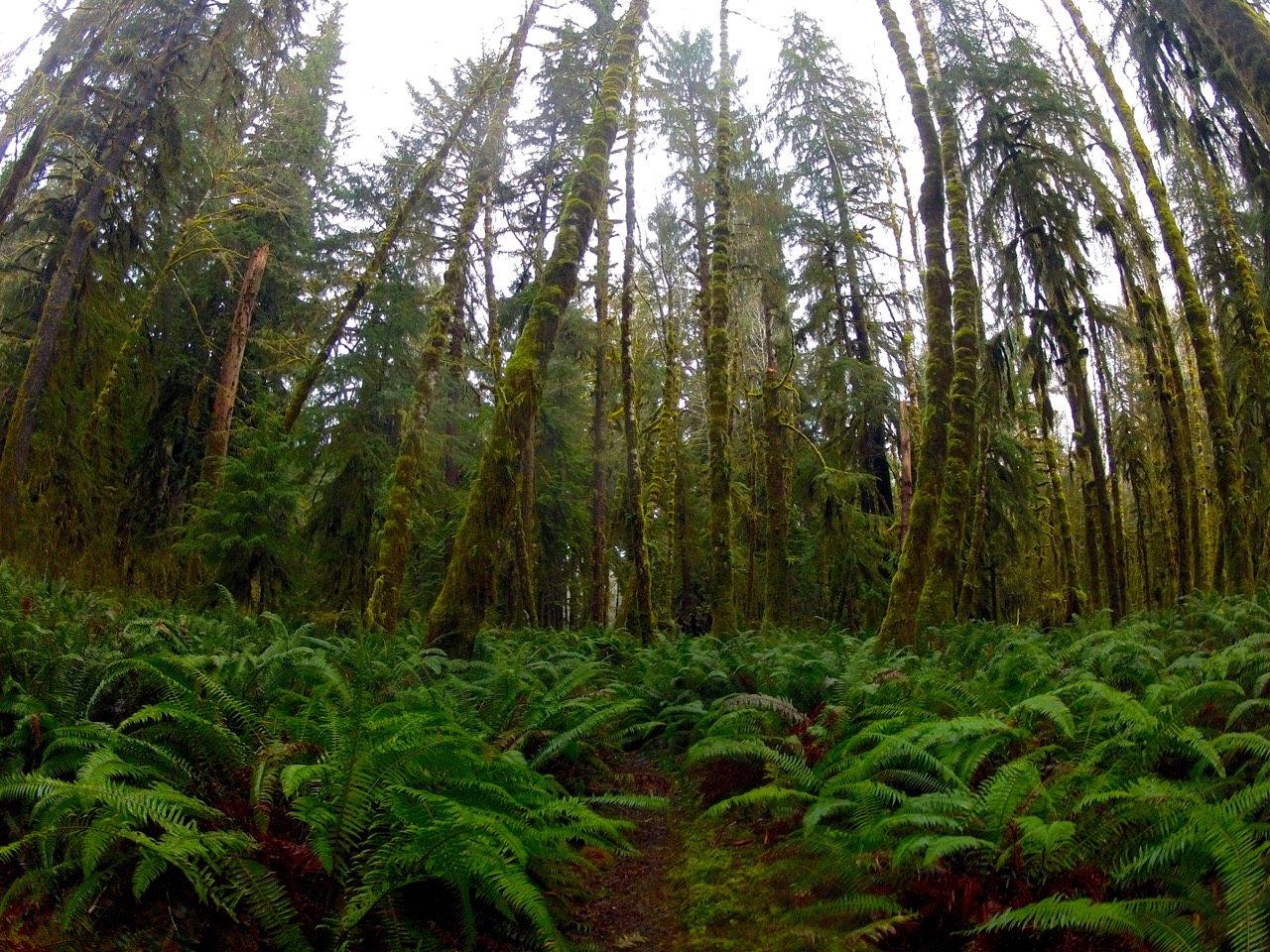No matter the month, you should take any and every opportunity you have to get away from the roads in Yellowstone National Park. While driving the north roads when visiting in November and December will give you an amazing wildlife-watching experience, the true spirit and soul of the region is found while on foot.
Know that the weather and trail conditions are hard to predict during a November and December trip to Yellowstone. During your visit, temperatures may be right around zero, they may be right at freezing, or it may be unseasonably warm and you can hike in shorts. Some years, the trails are covered in snow right away and you’ll need snowshoes. In other years, the snow slowly builds, allowing hiking in boots or trail runners through November and then needing snowshoes in December. There is no way to know, so always be ready for anything. When in doubt, error on the side of cold and snowy and have too much cold weather gear. After all, it is always easier to remove layers you don’t need than to add layers you don’t have.
Wildlife Watching and Remoteness Along the Lamar River Trail
I mean, there is a reason this is the most popular hiking tour I offer. From wildlife watching and coming across bones and antlers, to learning about cool history geology and having an entire region of the park pretty much to yourself, you can’t go wrong on this hike. On this hike, you will see a remote thermal area, come across a bison skull or two, potentially spot for bison, elk, wolves, and moose, and experience the silence and solitude found a few short miles from the trailhead. Whether it is a hike or a snowshoe trek, this adventure is always a great choice.
Standing a hundred feet above the Yellowstone River on a snow-covered suspension bridge above a narrow canyon is ridiculously awesome, so it is little wonder why this hike is so rad. Not only will you get to traverse over the bouncing bridge and take in the views of the river, but you will also get a first hand view the beauty of the northern range. This is also a fantastic spot to sit and scan for wildlife. On this hike, I have often seen bison, bighorn sheep, and even wolves. Obviously, animal sightings are never guaranteed, but this trail gives you a great chance to see something special away from anyone else.
The Yellowstone River Overlook Trail Wildlife and Scenic Adventure
This trail is a personal favorite and is gorgeous all year long. Whether it is snowy or not, a hike along this trail will give you a fantastic opportunity to take in the grandeur of the Yellowstone River, learn about the geology of the region, and even give you a chance to spot wildlife. Not only that, but you’ll also have an opportunity to look over some of the most stunning scenery the northern range has to offer. While the main trailhead at the Yellowstone River Picnic Area is closed for construction, the trek from the Specimen Ridge Trailhead nearby makes the reveal of the river and canyon that much more impressive.
Largely overlooked the majority of the year, the solitude and serenity found on this trail during the end of the year is incredible. Not only will you get to wander alongside a slowly freezing lake, but you’ll also have a chance to trek along the rim of an overlooked canyon, eventually reaching a stunning view of a waterfall that only a handful of park visitors see each year. Toss in elk and bison sightings, as well as a chance to stand atop a ridge and gaze at the mountains of the northern range, and this spot may become a favorite.
Slough Creek Wildlife Watching
While Lamar gets nearly all of the glory for wildlife-watching opportunities, and for good reason, Slough Creek is an off-season gem that has the potential to dazzle. Along this trek, which can be anywhere from 5-15 miles depending on your desire and the weather, you will travel through the prairie, taking in mountain, creek, and landscape views. Hikers will also pass through bison, elk, wolf, and bear habitats while taking in views of the wild Slough Creek Valley. This one is a personal favorite of mine, as I have had some great wildlife sightings here every year.
Found right from Mammoth Hot Springs, this nearly six-mile loop trail takes you into the backcountry of the park in a hurry. Popular with elk, bison, and the remaining pronghorn of the region, the path also passes a few small lakes and gives off mountain views. There is also a great chance of seeing bighorn sheep in the distance, as well as coming across some bones and antlers. Once the snow starts to fall and stick around, this trek becomes a burly snowshoe adventure, helping to demonstrate the difficulties of traveling away from maintained and groomed trails.
Have you ever spotted a waterfall from a roadside turnout and wished you could get to the other side of the creek to stand on top of it? That is exactly what you get when you take a trek on the Lava Creek Trail. Following the paths of bison, elk, coyotes, and even wolves, the path skirts along Lava Creek before arriving at the top of Undine Falls. From here, you can call it a day (it is only a one-mile round trip hike) and take a glimpse and gander down toward Mammoth Hot Springs, or wander down the trail a bit to the confluence of the creek and the Gardner River, which is 5.5 miles round trip. The view from this spot is also stunning, showing off the bridge spanning the river, as well as Bunsen Peak and Mammoth.
Tower Fall and Calcite Springs
This is considered one of the true classic snowshoe or cross country ski treks in Yellowstone, and for good reason. At five miles round trip, this adventure follows the snowed-covered over road from Roosevelt Junction up to Tower Fall, passing areas where bison linger and coyotes wander. Full of stunning views, awesome geology and even a whiff of sulfur in the air, this is an adventure I take multiple times a year. Whether the highlight for you in the mostly frozen sight of Tower Fall, the stunning cliffs and panoramic views along the route, or the serenity and beauty at the Calcite Springs Overlook, you’ll be happy you came here in the winter.

